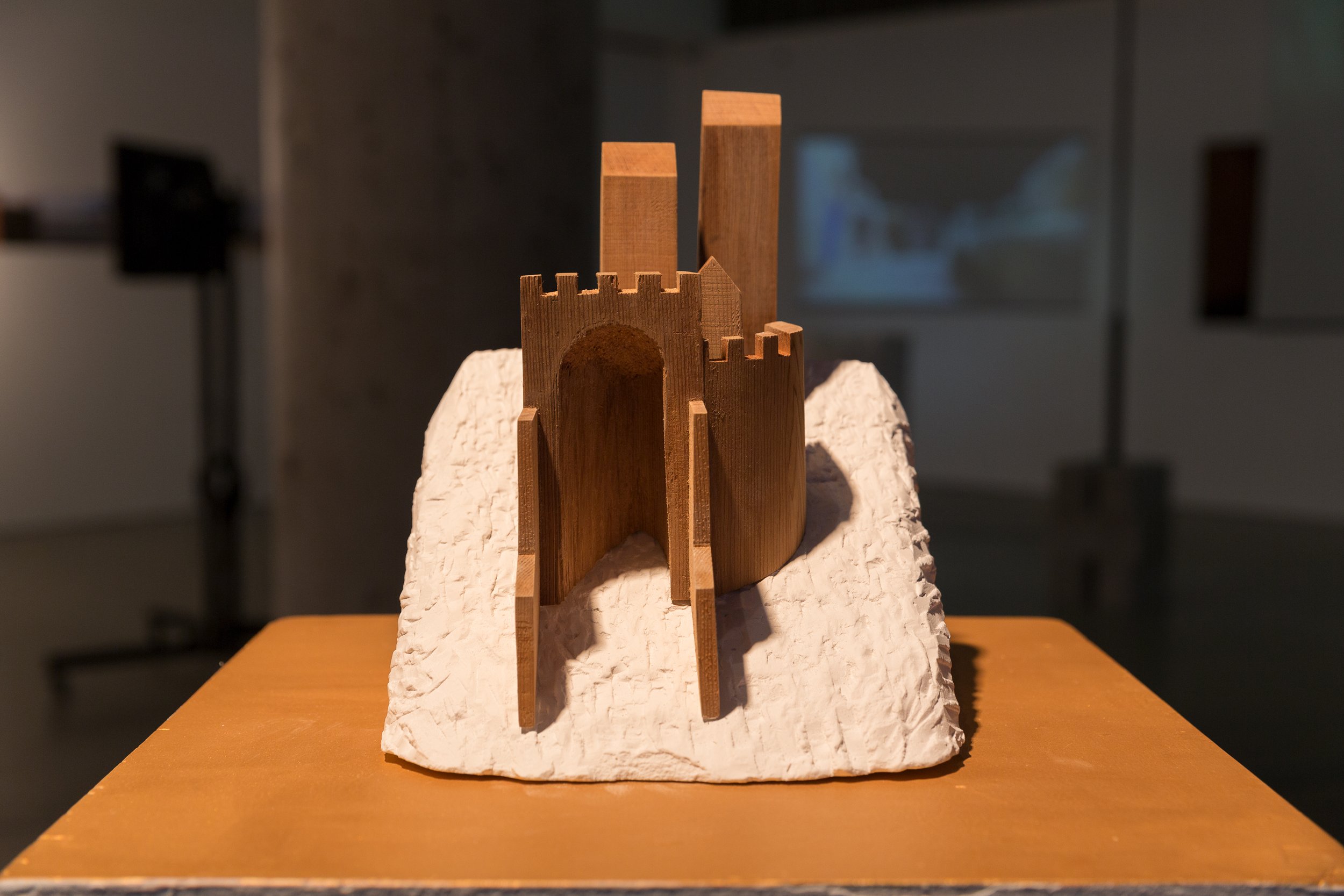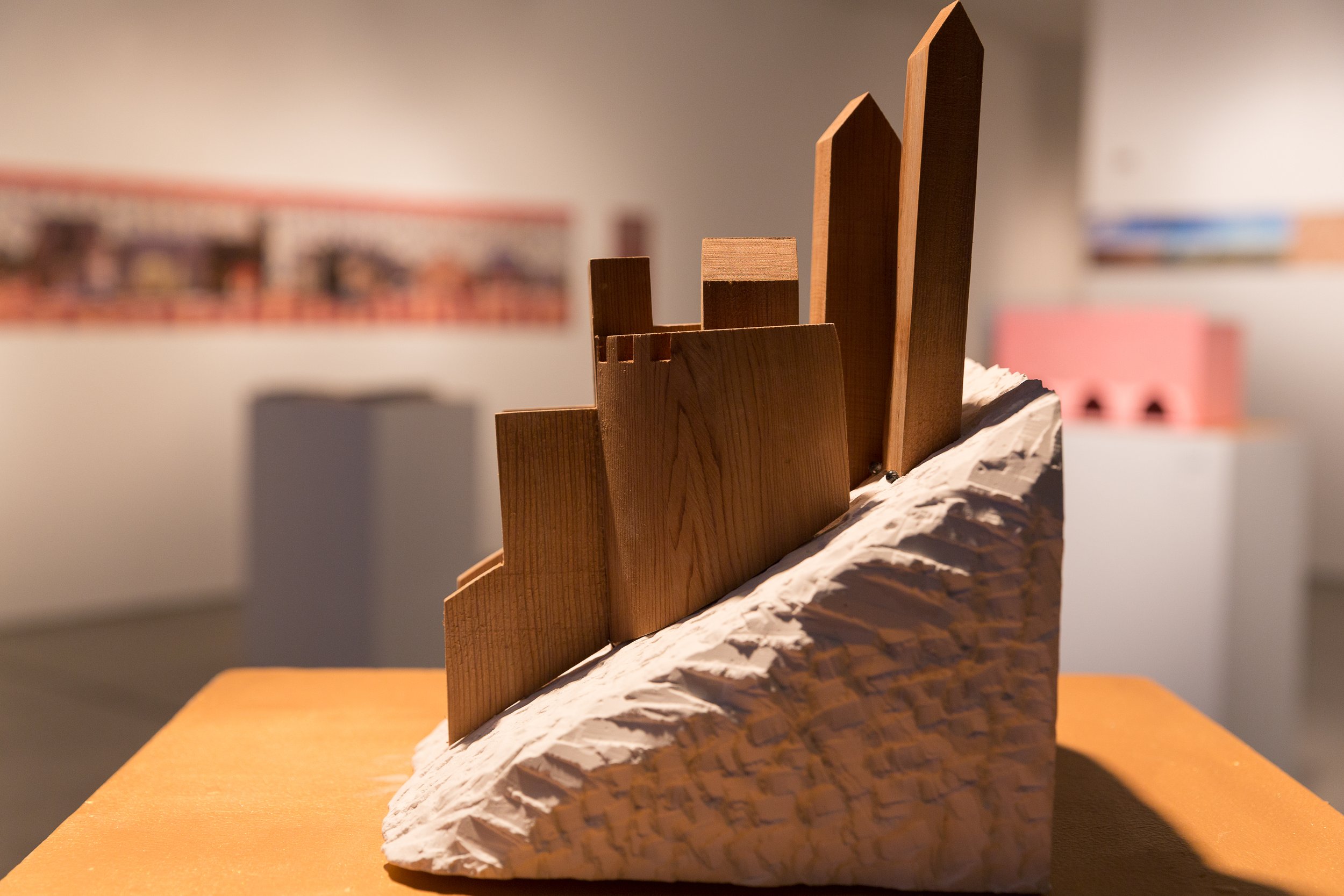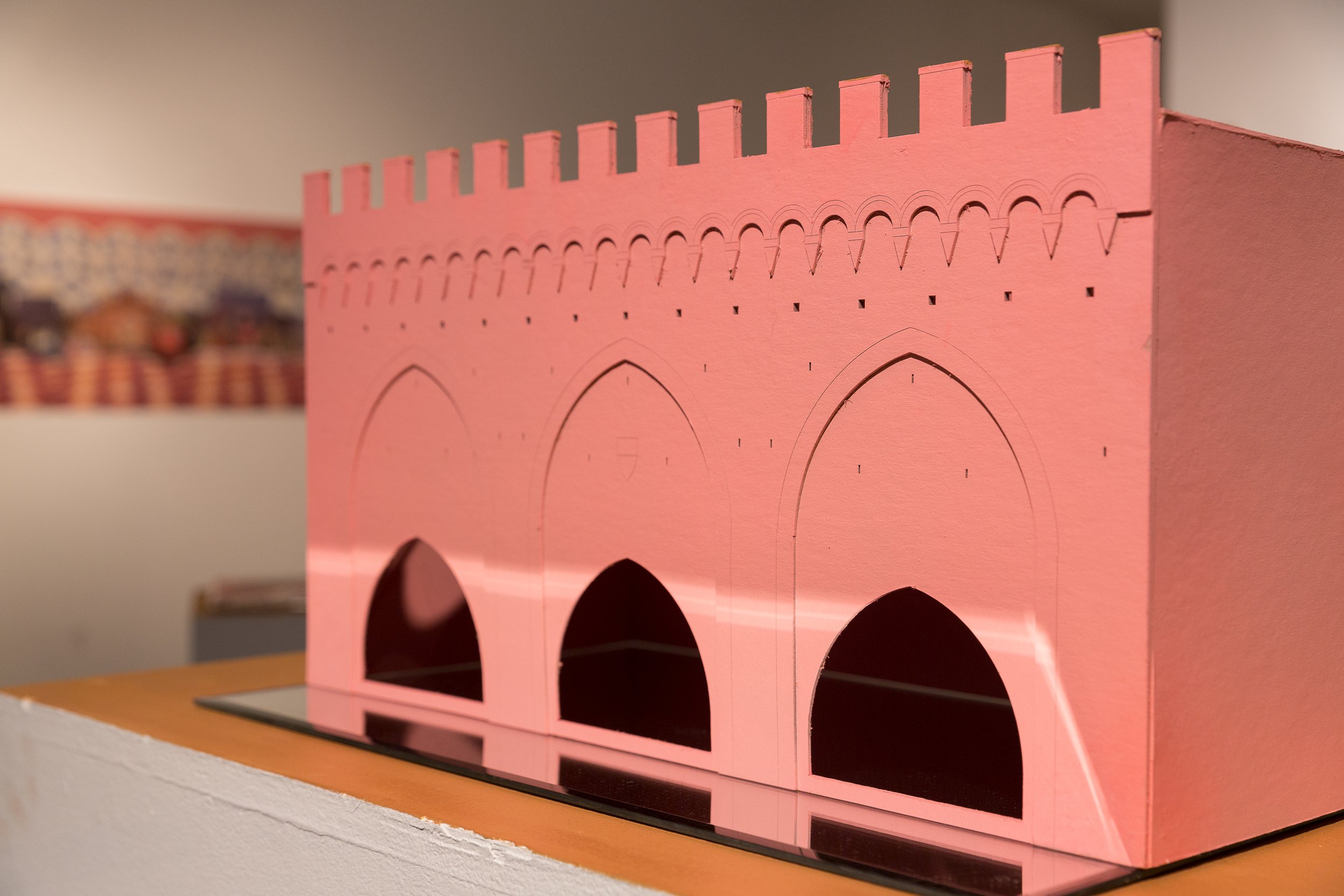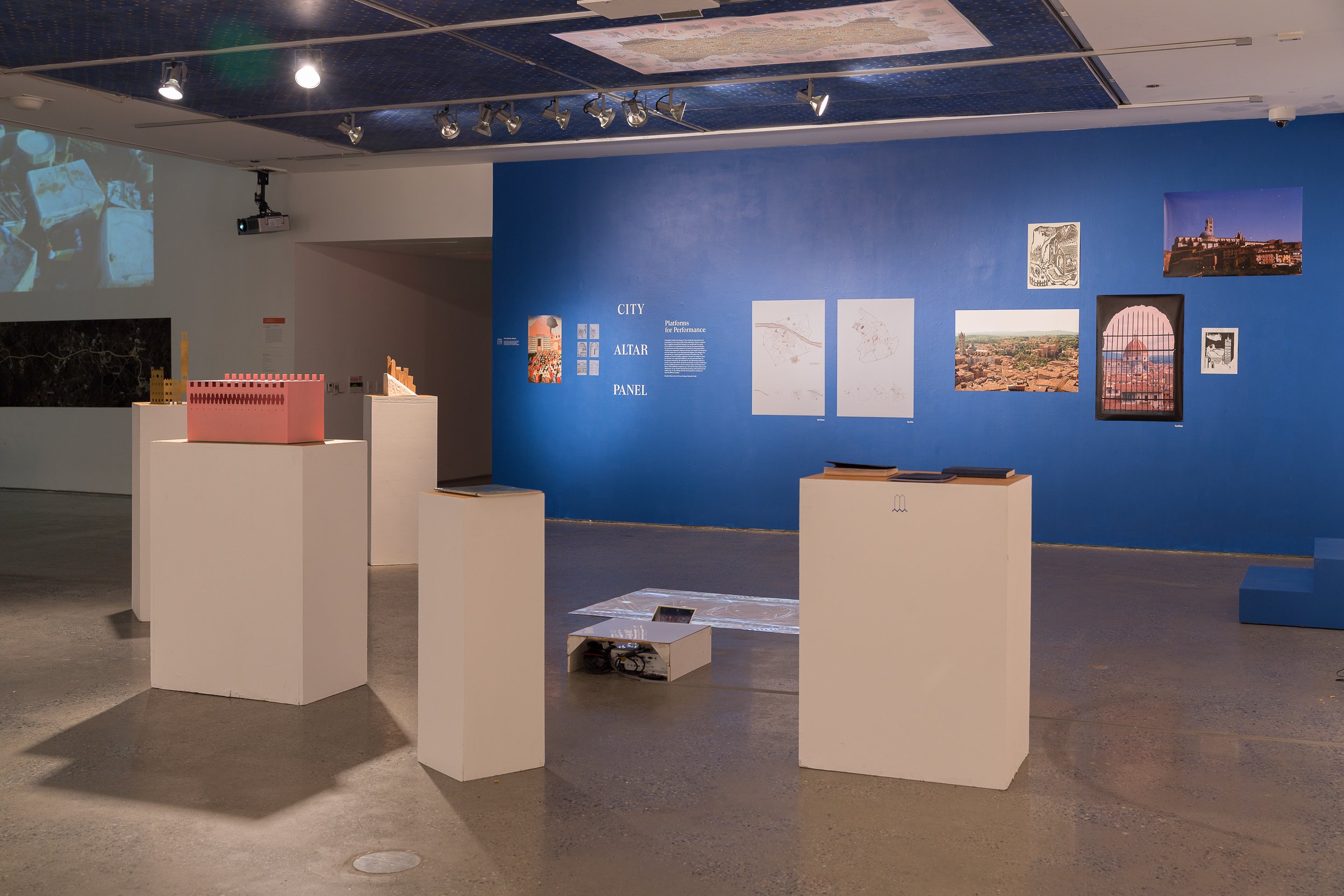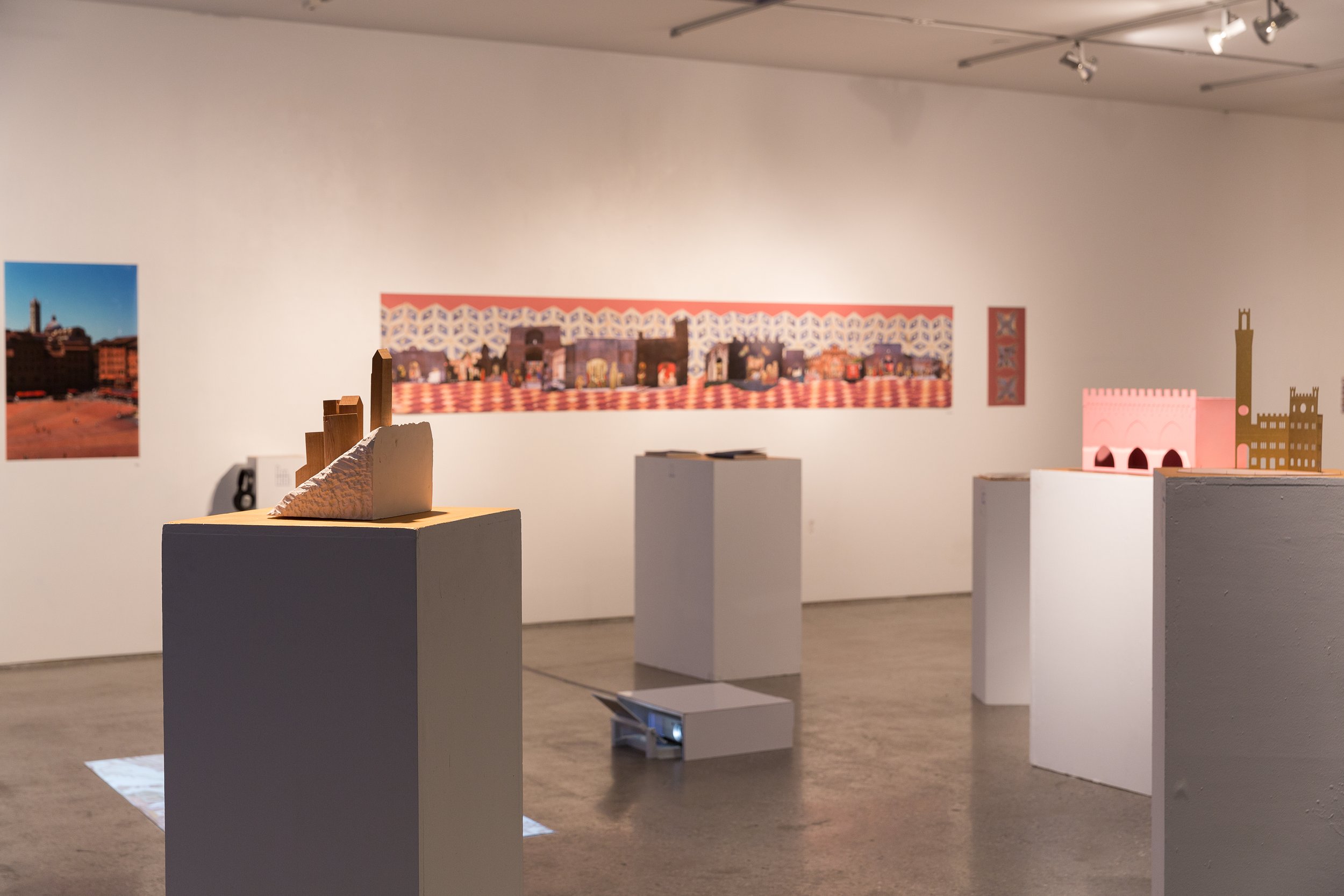City, Altar, Panel: Platforms for PerformaNce
Benjamin Menschel Fellowship AND EXHIBITION — 2017 - 2018
Natalia Oliveri + Kelsey Mitchell
“The Benjamin Menschel Fellowship Program to Support Creative Inquiry was endowed by a grant given to the Cooper Union by the Horace W. Goldsmith Foundation in 1994 to support work in the fields of art, architecture, design and engineering. This generous grant was intended to provide funding to exceptional students who propose scholarly, independent projects that will in some way provide a culmination to their education endeavors at the Cooper Union.”
The delineation of space in an operatic setting— the stage, the orchestra, and the liminal area between the audience and the performance, “the mystic abyss” according to Wagner— demonstrates the same space the medieval margin of manuscripts establishes, a threshold between the Divine and Earthly spaces formally and spiritually. The illustrated illumination holds the Divine, the condition in which the spiritual world can e contained, never to be fully accessed by am earthly spectator. The quality of being completely immersed in this separate realm in manuscripts is comparable to the separation of stage and audience present in an opera.
In practice here at the Cooper Union, we are mutually fascinated by the idea of the frame and how it affects the line of sight in our work as graphic designer and architect. This proposal is rooted in the idea of collaboration. Through the examination of two scale of representation, we are able to design and articulate new modes of perception through the manipulation of these historical images and traditions. We are proposing a comparison of how the images illustrated in illuminated manuscripts, and a selection of panel paintings, provide a view into a system of intangible world-building which was then adapted and enhanced further into the fourth dimension by operatic set design through the introduction of advanced perspective.
An active analysis of Siena becomes essential in this comparison. The city is right in its medieval history, becoming a cosmopolitan center because of its proximity to the Mediterranean Sea. It is because of this rapid cultural growth during the early Renaissance that the oblique style of drawing in medieval manuscripts transitions to a more advanced form of perspectival investigation through devices used in operatic theater. We believe that the relationship between the illuminated page and the operatic set lies in the element of visceral theatricality; there are stages for observation, operating through the miniature and monumental scale.
We begin to explore the question of authorship, and whether it rests purely in the ambiguous creators of biblical and mythical stories on in a certain renewal of narratives. We are a graphic designer and an architect. Considering these roles in a parallel context, there is the implication that these forms of representation require a collaboration between practices, and consequently the involvement of more than one author to create a completed work. Fluidity in authorship is essential to the manipulation of space.



